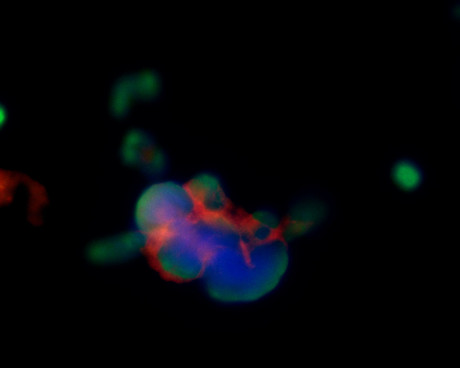Blood test to predict the spread of head and neck cancer

Research led by the Queensland University of Technology (QUT) has shed fresh light on how head and neck cancer spreads to other organs — a breakthrough which has led to the development of a simple blood test to predict patients’ risk of spread long before conventional imaging can.
Associate Professor Chamindie Punyadeera and her team identified clusters of circulating tumour cells (CTCs) in blood samples from 15 out of 60 patients recently diagnosed with stage IV locally advanced head and neck cancer which had not spread to other organs. She and her team are working with Professor Ian Papautsky, a Chicago-based biomedical engineer, who has developed a device to separate single CTCs and CTC clusters from the blood of cancer patients.
“Research on single CTCs has shown they have clinical significance in predicting the course of cancer, but understanding the role of clusters of CTCs in cancer spread has been limited,” said Associate Professor Punyadeera.
“We found that the presence or absence of short-lived CTC clusters in patients who had locally advanced head and neck cancer was associated with the spread of cancer to other organs.
“The preliminary study found that six of the seven patients with stage IV head and neck cancer who had CTC clusters went on to develop lung or liver secondary cancers within six months.
“In contrast, we found that the absence of CTCs or CTC clusters in patients with head and neck cancer may indicate no systemic spread.
“This finding is potentially an important prognostic tool that could guide doctors’ choice of therapies as we move to personalised medicine for individual patients. This work has been expanded into lung cancers where there are more targeted therapies.”
Dr Arutha Kulasinghe, who worked with Associate Professor Punyadeera on the research, said it was early days yet for this finding. “But we now know that CTC clusters may hold promise as indicators of cancer spread,” he said.
“CTC clusters represent micro-metastases, which is why they can be detected up to six months before a macro-metastasis is discovered by conventional imaging such as CT scans.
“To investigate further, we are conducting a 100-patient longitudinal study funded by a federal government Cancer Australia grant.
“We are also looking to expand this technology to other solid cancers such as lung cancer.”

The study was published in the journal Scientific Reports and presented at the international Saliva and Liquid Biopsy Symposium 2018, held at QUT from 5–6 July. It comes less than two weeks after researchers at The University of Queensland revealed how to reverse drug resistance in head and neck squamous cell carcinoma.
Babies of stressed mothers likely to get their teeth earlier
Maternal stress during pregnancy can speed up the timing of teeth eruption, which may be an early...
Customised immune cells used to fight brain cancer
Researchers have developed CAR-T cells — ie, genetically modified immune cells manufactured...
Elevated blood protein levels predict mortality
Proteins that play key roles in the development of diseases such as cancer and inflammation may...



